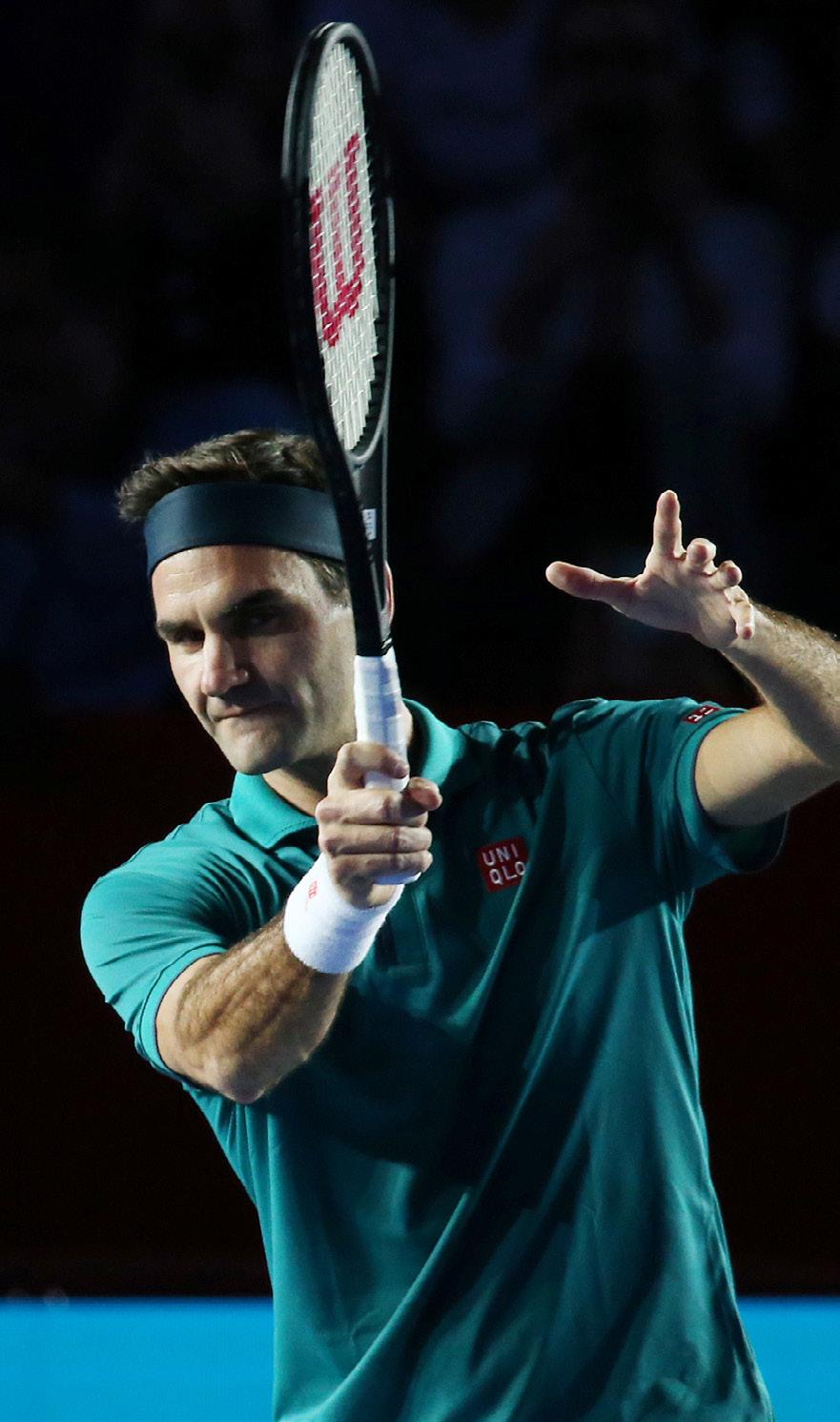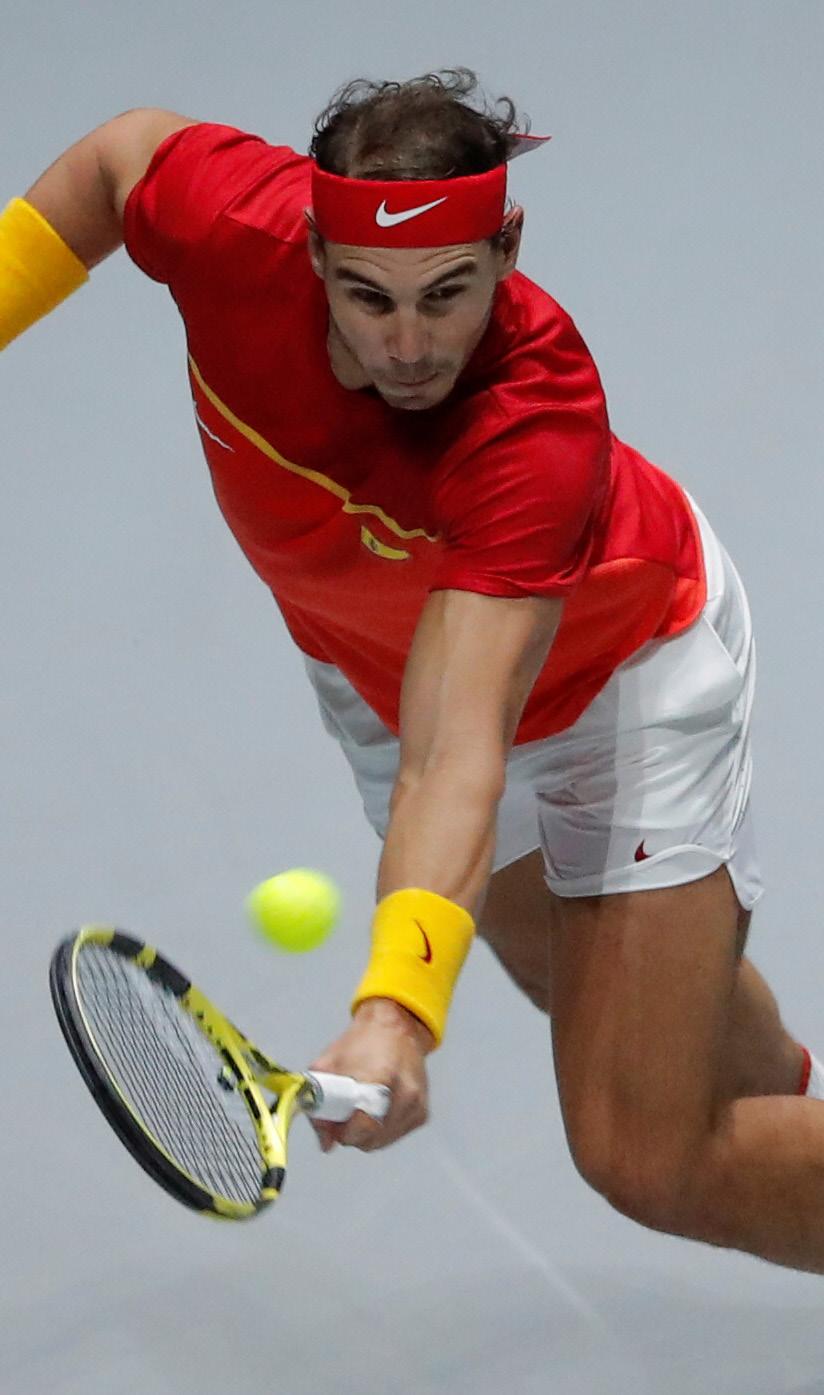
7 minute read
The Greatest Tennis Player of All Time
from Jan-Feb 2020
Three tennis players who are candidates for GOAT—greatest of all time— have faced each other repeatedly. Luckbox picks the best.
By Andrew Prochnow
Advertisement
GOAT, which stands for “greatest of all time,” is usually applied to sports. But choosing the GOAT inevitably leads to controversy. Who’s better—Babe Ruth or Barry Bonds? Michael Jordan or LeBron James? Tom Brady or Joe Montana? Joe Louis or Muhammad Ali? Mario Andretti or Michael Schumacher? Man O’ War or Secretariat?
The passage of time has made it impossible to conduct direct matchups of some of those and other potential GOATs. In one example, Ruth died in 1948, and Bonds was born in 1964. But in tennis that’s arguably not the case. Three of the all-time greats—Roger Federer, Novak Djokovic and Rafael Nadal— have faced each other numerous times and are still playing.
Djokovic and Nadal have played 54 matches, and it’s nearly a dead heat. Djokovic is leading 28-26. Federer and Nadal have met on the court 40 times, with Nadal emerging victorious 24 times, besting Federer’s 16 wins. Federer and Djokovic have nearly split their 49 matches, with Djokovic leading 26-23.
Those three players and other tennis greats qualify for consideration as the GOAT player, but analysts agree that Djokovic and Nadal are probably competing in the sport’s GOAT rivalry. The pair has played each other an incredible number of times, the matches have been spectacular and the two players are less than a year apart in age.
The Djokovic-Nadal competition was particularly hard-fought in 2019. They evenly split the four majors, and Nadal only managed to edge out Djokovic to clinch the year’s No. 1 ranking during the final tournament of the year, the Nitto ATP Finals in London.
While Djokovic and Nadal were eliminated during the round robin stage in London— partly because of exhaustion from a long year— it was Djokovic who needed favorable results in London and couldn’t find them. Djokovic was knocked out of the race for No. 1 by a familiar nemesis—none other than Federer. Had Djokovic won that match, and gone on to win the tournament, he would have cemented his sixth year-end No. 1 trophy and tied with the record holder in that category, Pete Sampras.
Instead, Nadal’s ascension to No. 1 at the end of 2019 means that each of the so-called “Big 3” players—Nadal, Djokovic and Federer—have now earned that honor on five occasions. A situation that long-time player, coach and analyst Patrick McEnroe referred to as “justice.”
Aside from the end-of-year rankings, some tectonic shifts in the GOAT narrative occurred during 2019. Taking home two Slam trophies, Nadal now sits only one major behind Federer in the record books of tennis history—a distinction many view as the most prestigious in the game.
Age matters For a large percentage of tennis fans, the fact that Federer still holds the all-time record for Slam titles (in the men’s game) is evidence enough that he’s the sport’s GOAT.
But for others, the line between the accomplishments of Nadal and Federer is blurred, considering what Nadal has achieved through the age of 33½, compared with what Federer had achieved by that age. For example, at 33½ years old, Federer had claimed 17 majors, two fewer than Nadal’s tally.
Also note that since turning 30, Nadal has twice (2017 and 2019) achieved the year-end No. 1 designation. Nadal holds the record as the oldest-ever year-end No. 1 in tennis history (33½). The last time Federer was ranked No. 1 to end a season was a decade ago, when he was 28 years old.
Assume for a moment that Slam titles and year-end No. 1 designations aren’t the only relevant achievements for GOAT. Further assume the GOAT designation even makes sense when comparing players from different eras.
Moving beyond that limitation, what does the historical data indicate regarding the careers of Federer and Nadal? The table on the facing page suggests their “GOAT race” remains extremely tight.

Rafael Nadal
Just remember Federer is five years older than Nadal, and six years older than another GOAT candidate, Djokovic. A “final” analysis can’t be conducted until all of the Big 3 retire. Federer remains the all-time record holder on the men’s side of the game with 20 Slam titles. However, the fact that Nadal holds 19 majors and is five years younger than Federer would suggest that lead is tenuous. Besides, Nadal holds the record for the most Masters 1000 titles in tennis history and leads Federer by a considerable margin in that category.
The Masters 1000 includes an annual series of nine tournaments held around the world which constitutes the level immediately below the Grand Slams. Nadal has taken home seven more Masters 1000 trophies than Federer despite the fact that he is five years younger.
Head-to-head In their head-to-head meetings, Nadal leads comfortably, both overall (24-16) and in the Grand Slams (10-4).
The nine Masters 1000 include six hardcourt tournaments and three clay tournaments. Given that Federer is widely considered one of the best-ever players on hardcourt, that theoretically means the he would have had more “good” chances to bring home a title at that level than Nadal. Nadal’s known as “The King of Clay” for his prowess on that surface, but still leads in the category.
In the majors, Nadal and Federer have won on their favored surfaces. The Spaniard (Nadal) is 6-0 against Federer at the French Open, while the Swiss Maestro (Federer) is 3-1 against Nadal at Wimbledon. However, on the more neutral hardcourt surface, Nadal leads Federer 3-1. These four hardcourt matches were all contested at the Australian Open, as the two have never faced each other at the U.S. Open. Nadal and Federer have both ended the year 11 times as either No. 1 or No. 2 in the world. Federer leads in number of weeks at No. 1 but, once again, he’s five years older.
Federer has produced an astounding six titles at the Tour Finals, but it’s a roundrobin tournament contested indoors. Likewise, while Nadal has helped lead Spain to five Davis Cup titles, that’s a team competition and Spain tends to field a much deeper team than Switzerland.
Federer and Nadal have both won Olympic gold in doubles competition. But Nadal has won the so-called “career Golden Slam” that includes winning all four majors at least once, as well as an Olympic gold medal in singles. The only other male player to achieve that feat is Andre Agassi.
The Swiss Maestro once reached 10 consecutive Grand Slam finals. Nadal remains the only player in tennis history to win a major on grass, clay and hardcourt in the same calendar year (2010).
Rod Laver won all four majors during two different calendar seasons, which is referred to as the “calendar Grand Slam.” However, Laver notched these accomplishments before the introduction of hardcourt at the Grand Slam level. That means Laver won three majors on grass, and one on clay, during the two years in which he completed the calendar Slam.
Since the introduction of hardcourt at the U.S. Open (and later at the Australian Open) Nadal is the only player to win a Slam on all three surfaces in the same calendar year (a.k.a. Roger Federer the ”Surface Slam.”) Nadal is also the youngest player in the Open Era to achieve the career Grand Slam, meaning he won all four majors at least once at the youngest age.
There’s a solid argument that Nadal has already edged ahead of Federer in the GOAT race. Even without the overall Slam record, Nadal’s achievements at the age of 33½ have clearly been more impressive than what Federer accomplished by the same age.
Interestingly, Federer himself suggested recently that the Spaniard “is going to go down as maybe the greatest player of all time. He’s that good of course.” Luckbox is picking Nadal, but regardless of where one stands on this GOAT debate, there’s no denying that results from 2020 could go a long way in pushing the final decision in one direction or the other. That’s why the next tennis season might be the most-anticipated of all time.
Still, Djokovic—with victories in 16 majors— could ultimately edge both Nadal and Federer for the “GOAT” designation. The 2020 season may go a long way in deciding that, too.
Andrew Prochnow, a longtime options trader, has written extensively on pro tennis and contributed articles to Bleacher Report and Yahoo! Sports.










